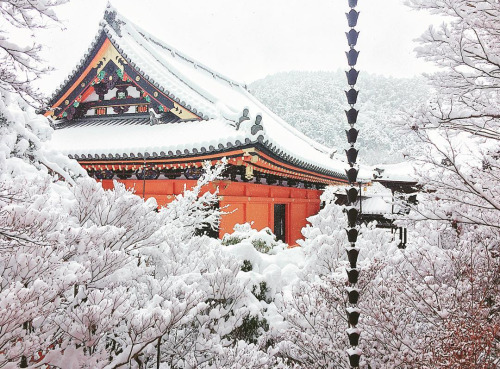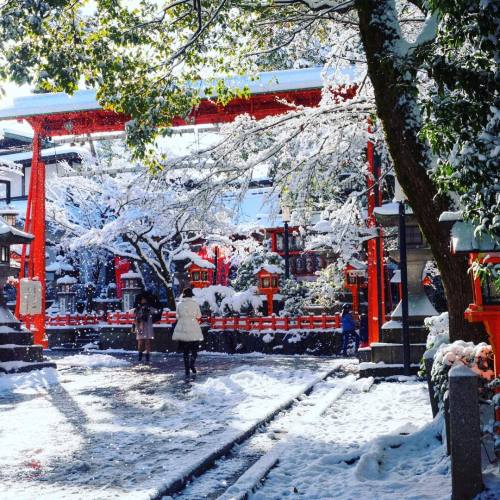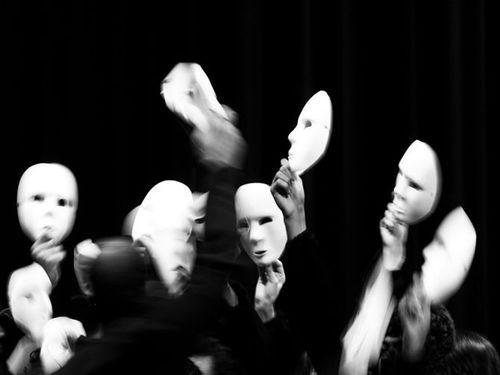Cassini: Photos Of Saturn’s Ocean Moon Enceladus, November 26th 2017: [1] [2] [3] [4] [5] [6] [7] [8]
![Cassini: Photos Of Saturn’s Ocean Moon Enceladus, November 26th 2017: [1] [2] [3] [4] [5] [6] [7] [8]](https://64.media.tumblr.com/d9028e2e0d6a044bf7f46486fdbc2594/tumblr_ohedi4ED2U1r4o9aco1_500.jpg)
![Cassini: Photos Of Saturn’s Ocean Moon Enceladus, November 26th 2017: [1] [2] [3] [4] [5] [6] [7] [8]](https://64.media.tumblr.com/efc6e64bcc45405d8a78249cfbf2fbc6/tumblr_ohedi4ED2U1r4o9aco2_500.jpg)
![Cassini: Photos Of Saturn’s Ocean Moon Enceladus, November 26th 2017: [1] [2] [3] [4] [5] [6] [7] [8]](https://64.media.tumblr.com/c1d38d55509e4e92f02a0ce301fec091/tumblr_ohedi4ED2U1r4o9aco3_500.jpg)
![Cassini: Photos Of Saturn’s Ocean Moon Enceladus, November 26th 2017: [1] [2] [3] [4] [5] [6] [7] [8]](https://64.media.tumblr.com/d6bb6e2182bdcba5970b3495999bbe22/tumblr_ohedi4ED2U1r4o9aco4_500.jpg)
![Cassini: Photos Of Saturn’s Ocean Moon Enceladus, November 26th 2017: [1] [2] [3] [4] [5] [6] [7] [8]](https://64.media.tumblr.com/1cd24c66229f48f88a0c733c040a5039/tumblr_ohedi4ED2U1r4o9aco5_500.jpg)
![Cassini: Photos Of Saturn’s Ocean Moon Enceladus, November 26th 2017: [1] [2] [3] [4] [5] [6] [7] [8]](https://64.media.tumblr.com/118dfe8fb64f25a325170b6c9827ebad/tumblr_ohedi4ED2U1r4o9aco6_500.jpg)
![Cassini: Photos Of Saturn’s Ocean Moon Enceladus, November 26th 2017: [1] [2] [3] [4] [5] [6] [7] [8]](https://64.media.tumblr.com/e03ced7a9d7d631f52e7eb0666afa985/tumblr_ohedi4ED2U1r4o9aco7_500.jpg)
![Cassini: Photos Of Saturn’s Ocean Moon Enceladus, November 26th 2017: [1] [2] [3] [4] [5] [6] [7] [8]](https://64.media.tumblr.com/fb8ce11c6553c95ee42c031a63fa8644/tumblr_ohedi4ED2U1r4o9aco8_500.jpg)
Cassini: Photos of Saturn’s ocean moon Enceladus, November 26th 2017: [1] [2] [3] [4] [5] [6] [7] [8] Image Credit: NASA/JPL-Caltech/Space Science Institute
More Posts from Ritasakano and Others
Paisagens do Japão, estar aqui é muito bom!!










Heavy Snowfall in Kyoto Turns the City Into a Beautiful Winter Wonderland
Contrastes.










100 views of Tokyo, Shinji Tsuchimochi

(Image caption: Motor neurons (green) form synapses (highlighted in magenta) on muscle fibers in a fruit fly. MIT neuroscientists have discovered a pathway that contributes to strengthening these synapses. Credit: Troy Littleton)
Neuroscientists reveal how the brain can enhance connections
When the brain forms memories or learns a new task, it encodes the new information by tuning connections between neurons. MIT neuroscientists have discovered a novel mechanism that contributes to the strengthening of these connections, also called synapses.
At each synapse, a presynaptic neuron sends chemical signals to one or more postsynaptic receiving cells. In most previous studies of how these connections evolve, scientists have focused on the role of the postsynaptic neurons. However, the MIT team has found that presynaptic neurons also influence connection strength.
“This mechanism that we’ve uncovered on the presynaptic side adds to a toolkit that we have for understanding how synapses can change,” says Troy Littleton, a professor in the departments of Biology and Brain and Cognitive Sciences at MIT, a member of MIT’s Picower Institute for Learning and Memory, and the senior author of the study, which appears in the Nov. 18 issue of Neuron.
Learning more about how synapses change their connections could help scientists better understand neurodevelopmental disorders such as autism, since many of the genetic alterations linked to autism are found in genes that code for synaptic proteins.
Richard Cho, a research scientist at the Picower Institute, is the paper’s lead author.
Rewiring the brain
One of the biggest questions in the field of neuroscience is how the brain rewires itself in response to changing behavioral conditions — an ability known as plasticity. This is particularly important during early development but continues throughout life as the brain learns and forms new memories.
Over the past 30 years, scientists have found that strong input to a postsynaptic cell causes it to traffic more receptors for neurotransmitters to its surface, amplifying the signal it receives from the presynaptic cell. This phenomenon, known as long-term potentiation (LTP), occurs following persistent, high-frequency stimulation of the synapse. Long-term depression (LTD), a weakening of the postsynaptic response caused by very low-frequency stimulation, can occur when these receptors are removed.
Scientists have focused less on the presynaptic neuron’s role in plasticity, in part because it is more difficult to study, Littleton says.
His lab has spent several years working out the mechanism for how presynaptic cells release neurotransmitter in response to spikes of electrical activity known as action potentials. When the presynaptic neuron registers an influx of calcium ions, carrying the electrical surge of the action potential, vesicles that store neurotransmitters fuse to the cell’s membrane and spill their contents outside the cell, where they bind to receptors on the postsynaptic neuron.
The presynaptic neuron also releases neurotransmitter in the absence of action potentials, in a process called spontaneous release. These “minis” have previously been thought to represent noise occurring in the brain. However, Littleton and Cho found that minis could be regulated to drive synaptic structural plasticity.
To investigate how synapses are strengthened, Littleton and Cho studied a type of synapse known as neuromuscular junctions, in fruit flies. The researchers stimulated the presynaptic neurons with a rapid series of action potentials over a short period of time. As expected, these cells released neurotransmitter synchronously with action potentials. However, to their surprise, the researchers found that mini events were greatly enhanced well after the electrical stimulation had ended.
“Every synapse in the brain is releasing these mini events, but people have largely ignored them because they only induce a very small amount of activity in the postsynaptic cell,” Littleton says. “When we gave a strong activity pulse to these neurons, these mini events, which are normally very low-frequency, suddenly ramped up and they stayed elevated for several minutes before going down.”
Synaptic growth
The enhancement of minis appears to provoke the postsynaptic neuron to release a signaling factor, still unidentified, that goes back to the presynaptic cell and activates an enzyme called PKA. This enzyme interacts with a vesicle protein called complexin, which normally acts as a brake, clamping vesicles to prevent release neurotransmitter until it’s needed. Stimulation by PKA modifies complexin so that it releases its grip on the neurotransmitter vesicles, producing mini events.
When these small packets of neurotransmitter are released at elevated rates, they help stimulate growth of new connections, known as boutons, between the presynaptic and postsynaptic neurons. This makes the postsynaptic neuron even more responsive to any future communication from the presynaptic neuron.
“Typically you have 70 or so of these boutons per cell, but if you stimulate the presynaptic cell you can grow new boutons very acutely. It will double the number of synapses that are formed,” Littleton says.
The researchers observed this process throughout the flies’ larval development, which lasts three to five days. However, Littleton and Cho demonstrated that acute changes in synaptic function could also lead to synaptic structural plasticity during development.
“Machinery in the presynaptic terminal can be modified in a very acute manner to drive certain forms of plasticity, which could be really important not only in development, but also in more mature states where synaptic changes can occur during behavioral processes like learning and memory,” Cho says.
The study is significant because it is among the first to reveal how presynaptic neurons contribute to plasticity, says Maria Bykhovskaia, a professor of neurology at Wayne State University School of Medicine who was not involved in the research.
“It was known that the growth of neural connections was determined by activity, but specifically what was going on was not very clear,” Bykhovskaia says. “They beautifully used Drosophila to determine the molecular pathway.”
Littleton’s lab is now trying to figure out more of the mechanistic details of how complexin controls vesicle release.

Amanhecer
As cores brindam um novo amanhecer
Olhos fixos de agradecimento
Flutuar com as nuvens
Puro deleite
Muitas vezes as imagens nos leva a mundos internos.

by Hisanori Manabe
Agosto, mês dos festivais de rua!! Adoro!
Experience The Best Japanese Summer Festivals...

Like India Japan is land of festivals(Matsuri).They have year long festivals from thanking the god for crops , celebrating sea day, giving thanks to their ancestors to appease the god’s thought to cause fire, floods and earthquakes.The whole county is found immersed with fun festival activities and events ranging from processions and traditional performances to ancient ceremonies.Few of them are-
1)Gion Matsuri-The Gion Matsuri gives the chance to see traditional Japanese performances , spectacular festival floats, girls and boys dressed in summer kimono & yukata and Japan’s finest festival food. The highlight of the festival is the dozens of huge festival floats that are pulled through the streets of Kyoto on July 17, the main festival day.

2)Tenjin Matsuri - The Tenjin Matsuri is ranked as one of Japan’s three greatest festivals including Gion Matsuri in Kyoto and Kanda Matsuri in Tokyo. The festival is held at the famous Tenmangu Shrine in Osaka and honors the god of learning.The major part of the festival includes the land procession with portable shrines ,a river procession with festival boats along the Okawa River and spectacular fireworks as night falls.

3)Kanda Matsuri- The Kanda festival is celebrated as a demonstration of prosperity with prime reason being worshipping the god of good harvest and matrimony and the god of fishermen and businessmen.The crowd goes crazy with the start of procession This procession features crowd favorites such as men on horses clad in samurai uniforms, festival floats with characters from popular folk stories and contemporary pop culture, musicians and dancers.

4)Obon Matsuri - The Bon festival, also known as Obon, is usually one of the biggest summer festivals in Japan. Although it’s not an official holiday, most people get about 3 days off during Obon season. At Obon, people honor their dead ancestors through a special type of dance (Bon Odori / Bon Dance) and also take this time to visit the resting places of their dead relatives.

So festivals are integral part of any culture of any country, but what’s so special about Japanese Festivals??
Japanese Food - You have to eat it to believe it…the mouthwatering snack stands at matsuri is people are crazy about! I bet if you can stand in those long queues of yakitori(grilled chicken in sticks) and karage (fried chicken skewed in stick with a cream dip!! Not to be forgotten the yakisoba more like the desi chowmein all stirred with vegetables and fish(optional).The okunomiyakai sometimes called as Japanese pizza is made up of cabbage /egg/tons of veggies with the topping of green onion,mayo and sweet sauce.You cannot stop at the jagabata stand which the traditional baked potatoes without skin tossed with salt and butter, which you can add as much as your arteries can stand!

Japanese Yukata- Japanese festivals gives you the chance to see beautiful, colourful yukata, which is a causal cotton summer kimono usually worn to festivals in Japan. It is a rare chance to see so many Japanese dressed in this beautiful traditional outfit as well as a fantastic opportunity to join in on the action and dress in a yukata yourself. Yukata are available for rent easily in Tokyo.

Fireworks- “Summer”: The season of fireworks also called as Hanabi has a long history in Japan.Japanese fireworks events (Hanabi) have an electric atmosphere & people dress in tradition yukata and lay mats in the grass for party with friends and family.People go to the firework locations 1-2 hours beforehand to reserve the best viewing location.With the fireworks starting the hooting becomes crazy with people shouting kirei and sugoi(beautiful/splendid) with beer cans and recording cameras in hand!!

The feel and rush of excitement of Japanese Festivals is something cannot be described in words…you have to be here to feel it!!
Interested in knowing more? Contact us right away: http://ghumojapan.com/

My etsy is having a short siesta to give me a chance to finish some orders and create some funky new creatures. I’ll be putting new dolls up weekly very soon…. There will be vegetables and there will be hats! 🐛✌️🍆🍑🍋 🌿🍄👒🌟💙
-
 transparentgentlemenmarker liked this · 5 years ago
transparentgentlemenmarker liked this · 5 years ago -
 pi-ters reblogged this · 5 years ago
pi-ters reblogged this · 5 years ago -
 pi-ters liked this · 5 years ago
pi-ters liked this · 5 years ago -
 sergio339 liked this · 6 years ago
sergio339 liked this · 6 years ago -
 leandrogmenez liked this · 6 years ago
leandrogmenez liked this · 6 years ago -
 darccyde liked this · 6 years ago
darccyde liked this · 6 years ago -
 trafficconerights liked this · 7 years ago
trafficconerights liked this · 7 years ago -
 rosakai reblogged this · 7 years ago
rosakai reblogged this · 7 years ago -
 nlockett reblogged this · 7 years ago
nlockett reblogged this · 7 years ago -
 nlockett liked this · 7 years ago
nlockett liked this · 7 years ago -
 thedreadpirateratchet reblogged this · 7 years ago
thedreadpirateratchet reblogged this · 7 years ago -
 demonic-passion liked this · 7 years ago
demonic-passion liked this · 7 years ago -
 ogtootall reblogged this · 8 years ago
ogtootall reblogged this · 8 years ago -
 willow-wildflowers reblogged this · 8 years ago
willow-wildflowers reblogged this · 8 years ago -
 stairwell-flowers reblogged this · 8 years ago
stairwell-flowers reblogged this · 8 years ago -
 stairwell-flowers liked this · 8 years ago
stairwell-flowers liked this · 8 years ago -
 kobepekrard-blog liked this · 8 years ago
kobepekrard-blog liked this · 8 years ago -
 shawn1965 liked this · 8 years ago
shawn1965 liked this · 8 years ago -
 eriksoderberg liked this · 8 years ago
eriksoderberg liked this · 8 years ago -
 starlovely liked this · 8 years ago
starlovely liked this · 8 years ago -
 another-leaf-on-the-loose reblogged this · 8 years ago
another-leaf-on-the-loose reblogged this · 8 years ago -
 geramanin liked this · 8 years ago
geramanin liked this · 8 years ago -
 dewinkelvansinkel reblogged this · 8 years ago
dewinkelvansinkel reblogged this · 8 years ago -
 dewinkelvansinkel liked this · 8 years ago
dewinkelvansinkel liked this · 8 years ago -
 coolbarnes21blog liked this · 8 years ago
coolbarnes21blog liked this · 8 years ago -
 sciff reblogged this · 8 years ago
sciff reblogged this · 8 years ago -
 species--8472 reblogged this · 8 years ago
species--8472 reblogged this · 8 years ago -
 ritasakano reblogged this · 8 years ago
ritasakano reblogged this · 8 years ago -
 ritasakano liked this · 8 years ago
ritasakano liked this · 8 years ago -
 internetnest liked this · 8 years ago
internetnest liked this · 8 years ago -
 twistdtogether reblogged this · 8 years ago
twistdtogether reblogged this · 8 years ago -
 holometabolism reblogged this · 8 years ago
holometabolism reblogged this · 8 years ago -
 chthonic-ape liked this · 8 years ago
chthonic-ape liked this · 8 years ago -
 justacuriousspeck reblogged this · 8 years ago
justacuriousspeck reblogged this · 8 years ago -
 intospace890 liked this · 8 years ago
intospace890 liked this · 8 years ago -
 very-feel liked this · 8 years ago
very-feel liked this · 8 years ago
